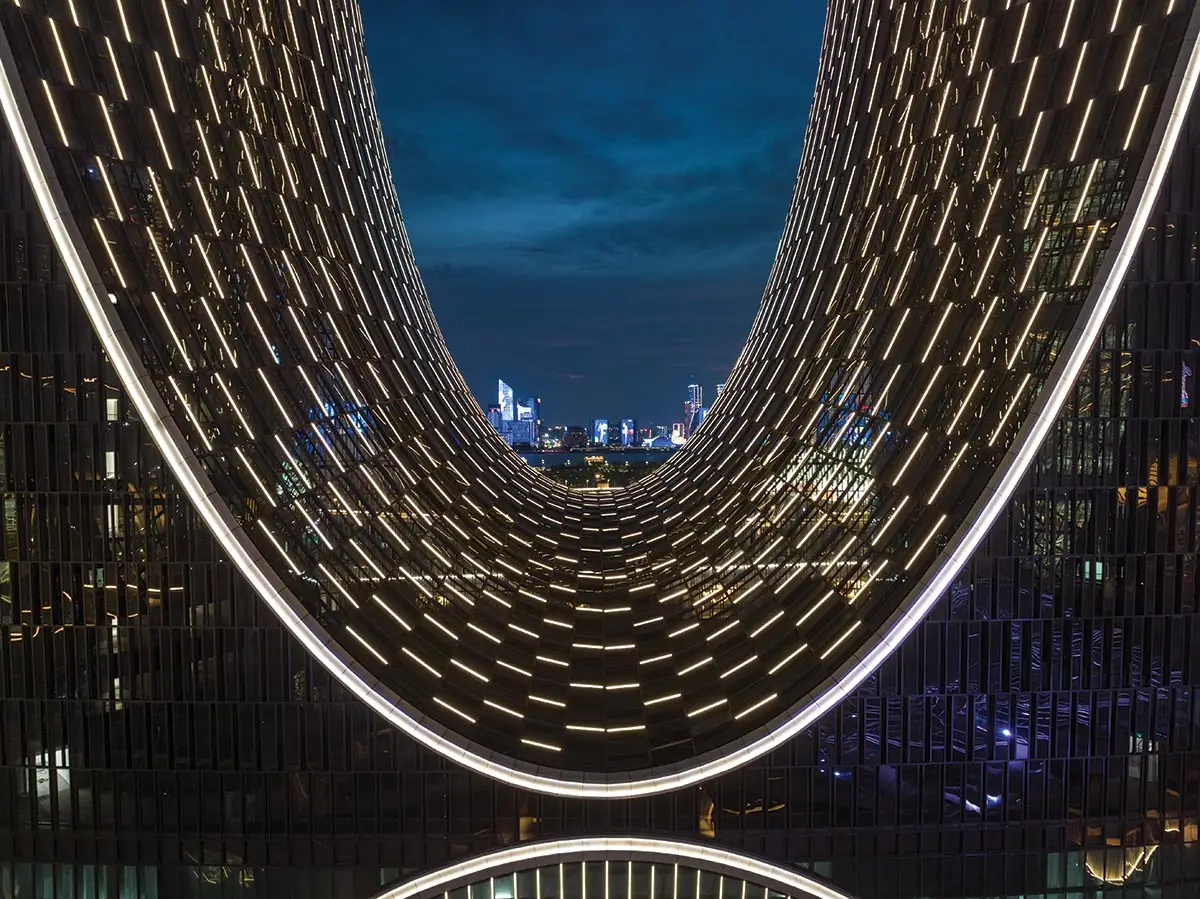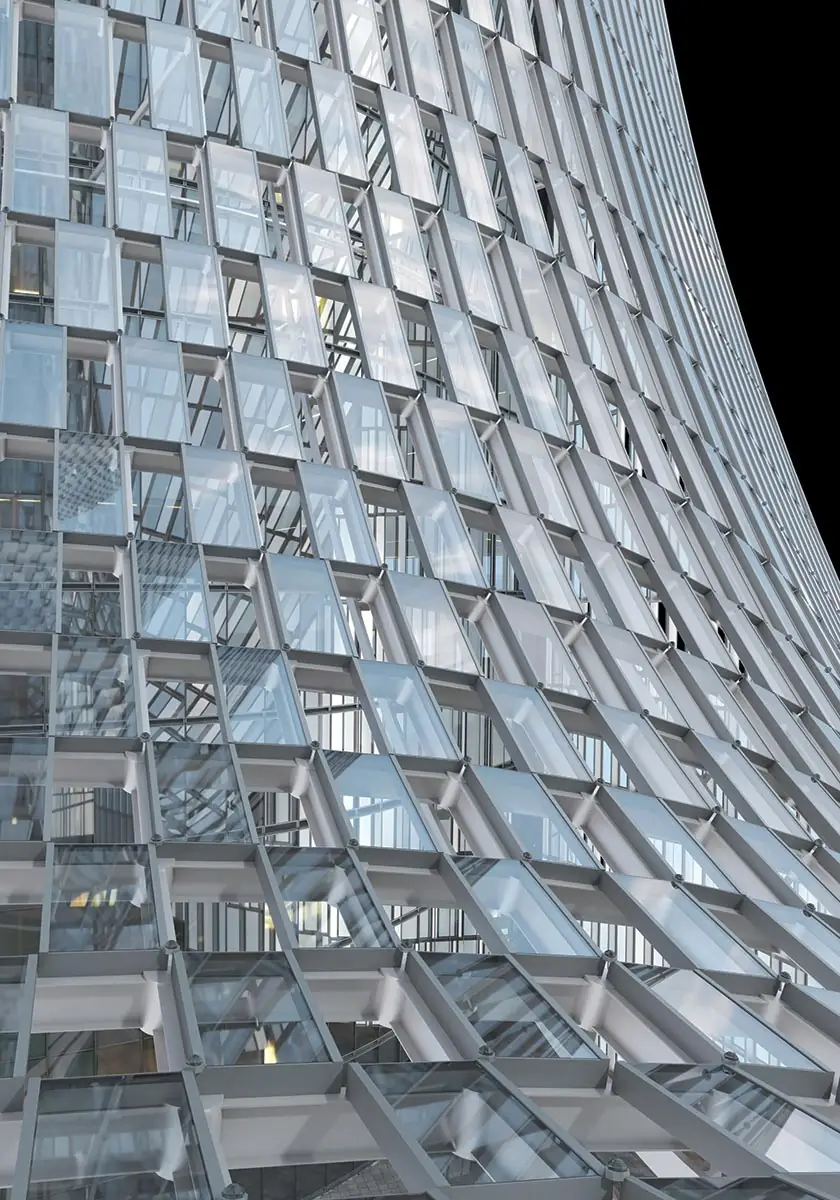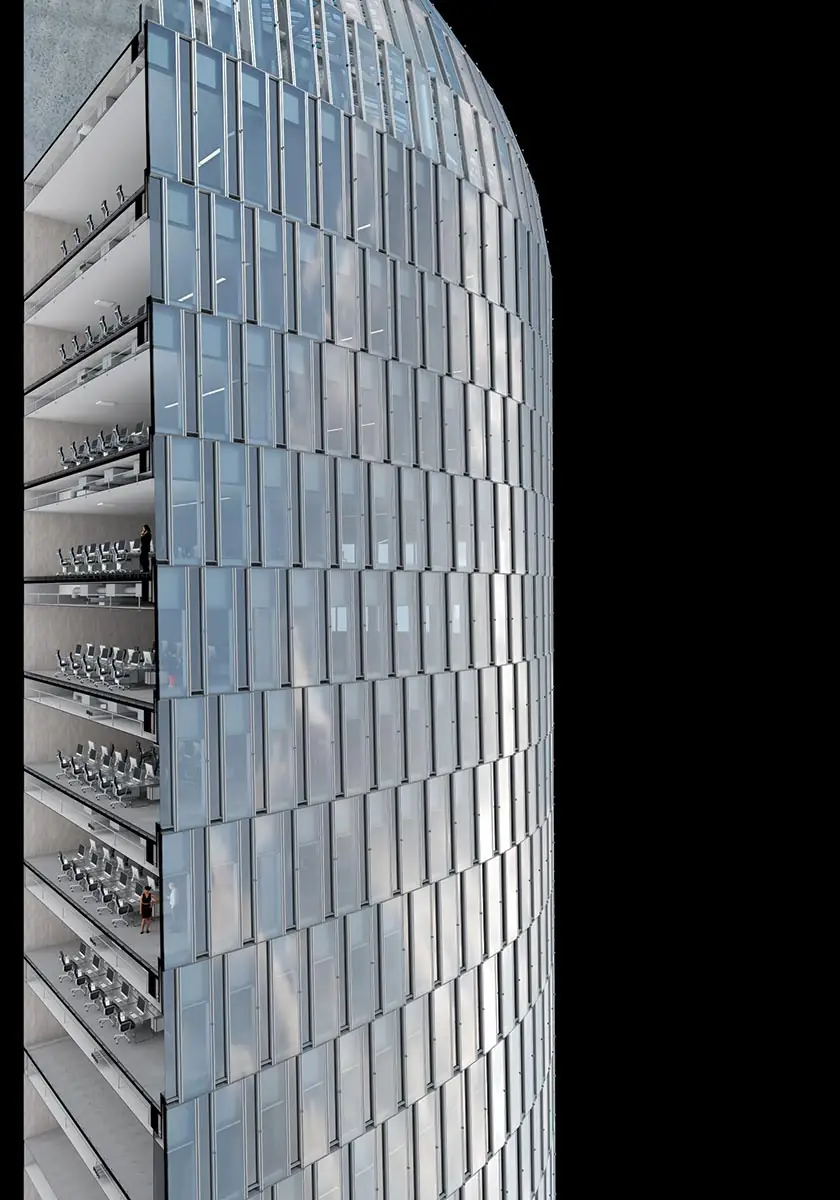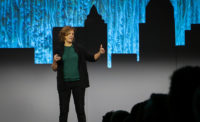The city of Hangzhou, the capital of Zhejiang province, sits at the mouth of China’s Qiantang River, and, like other metropolises across the country, it has undergone exponential population growth over the last several decades, now at some 11 million residents. Having risen from approximately 600,000 in 1950, it developed along the way a panoply of skyscrapers, as well as a campus of parks and stadiums to support last year’s Asian Games. The Hangzhou Century Center, designed by SOM for developer Greenland Holdings, is one such project that—as a two-towered 1,000-foot-tall structure connected by a sweeping midsection—demands attention, especially with a spectacular lighting array that emblazons its sinuous form against the night sky.
The Center, which contains offices, a hotel, and residences, is a linchpin for Qianjing Century City, a new nine-square-mile mixed-use district that incorporates the Asian Games sports infrastructure. Clad with a diaphanous glass veil that is suspended over the unitized glass curtain wall at the tower base and then merges into the fully enclosed facade as it arches upward, the supertall acts as a metaphorical and physical curtain opening to that urban scene. This outward-facing role is strengthened by the publicly accessible skybridge linking the two towers near their bases and by the more than 6,000 color-changing LEDs integrated into the glazing system on the internal face of the tower elevations.

The LEDs follow the tower form. Photo © Hangzhou Greenland, click to enlarge.
“Many of the most interesting buildings in the world can be encapsulated in two or three lines or movements. So, in this case, it is primarily those two curves,” says SOM associate director and design studio head Mark Nagis. “The idea behind the lighting was to do everything we could to reinforce those design aspects.”
That accomplishment was no small feat for a project of this scale. The glass overlay is fritted and arranged in a running-bond pattern; at the midsection, alternating modules remain open to the elements to act as both apertures and protective covers for the exterior space of the bridge below. The lighting scheme follows the building contours, being embedded within the curtain wall at the outward surface of each mullion, and runs vertically for some 15 miles across the facade. At the underside of the bridge, the design team opted for flat, triangular metal-panel cladding that follows the doubly curved surface; the gaps between those panels are fitted with additional LEDs. All the lights can be set to any color on the WRGB spectrum—literally millions of options—and they are currently programmed to change every minute, though that speed can be ramped up to 24 refreshes per second.

1

3
The glazing is a screen for the bridge, then merges into the curtain wall (1& 2). Photos © Hangzhou Greenland
SOM collaborated with Beijing-based lighting consultant TORYO International Lighting Design Center for the scheme and with Arup as the facade consultant. Both were critical in determining the feasibility of different design iterations, such as placing a field of individual LED dots at the intersections of spandrels and mullions. SOM’s in-house structural and mechanical engineers also helped guide decision-making. The sum of all those parts is an eye-catching edifice that successfully beckons residents and tourists to the banks of the Qiantang River and the heart of Hangzhou.
Credits
Architect:
SOM
Architect of Record:
Ecadi
Lighting Designer:
TORYO International Design Center
Consultants:
D+H (landscape); Arup (facade)
Client:
Greenland Holdings
Size:
5.7 million square feet
Cost:
Withheld
Completion Date:
February 2023
Sources
Glazing:
Taiwan Glass
Curtain Wall:
YASHA
Lighting:
Webb Deco (LED fixtures); CREE (LED chips)




Post a comment to this article
Report Abusive Comment